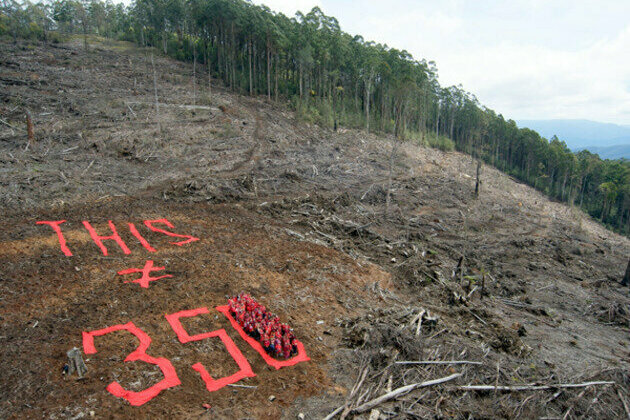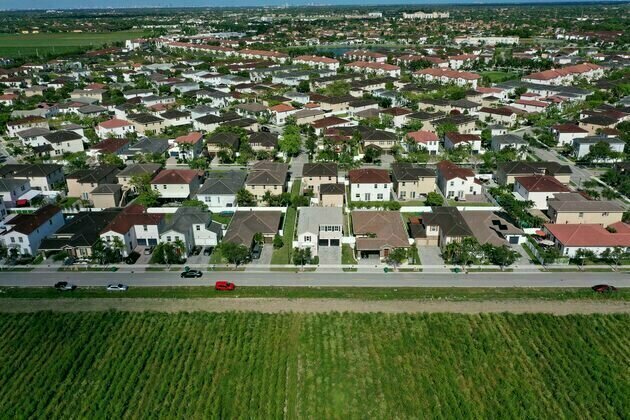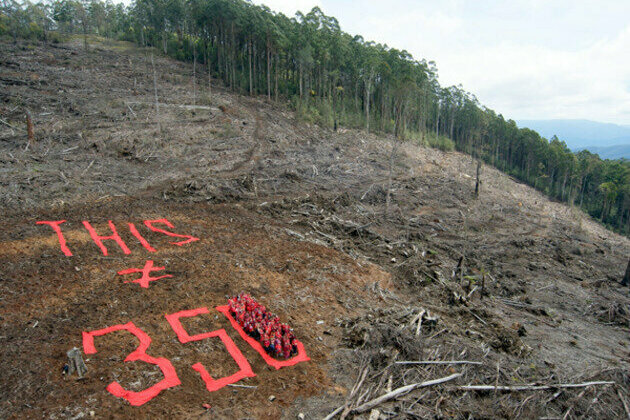Biodiversity offsets for dummies
Independent Australia
01 Mar 2025, 08:30 GMT+10

Biodiversity offsets promise conservation but enable destruction. A failed system fueled by profit, not science, is accelerating biodiversity loss, writesDavid Paull.
ALL AUSTRALIAN STATES and the Commonwealth embrace the concept ofbiodiversity offsets. It is regarded as a primary means to minimise the damage inflicted by development to the variety of life or in some cases, a means to actually increase it using a variety of actions generally at a location some distance from the affected area.
But is this a scientifically valid approach? And do we have examples of the principle being applied effectively?
The answer to the first question is, like carbon offsets, no it isnt, as most scientific papers that have looked at the approach haveindicated. The answer to the second question is, while ecological restoration and management activities have resulted in biodiversity benefits, do they offset large-scale development for which the method has been applied? The answer again is no. If so, then why has this methodology been so widely accepted by government regulators as a legitimate and robust approach?
We have to go back more than 20 years to see where biodiversity offsets came from, what it was originally intended for and how it was appropriated by a few with dollar signs in their eyes.
Albanese Government favours jobs and growth over biodiversityThe Labor Government seems focused on the mantra of jobs and growth, failing to observe the detrimental effects on biodiversity.
At a farm near Nyngan, New South Wales in the early 2000s, a mix of academics, landowners and other observers (including this writer)gathered to hear about the new "environmental improve or maintain"methodology designed for farmers on their land. It was contrived in response to the land-clearing issues that the NSW Government was trying to tackle at the time. The methodology had been worked on by a group of academics based out of Canberra, led by DrSue Briggs, in conjunction with theNSW Department of Land and Water Conservation.
The idea was to bring land clearing into the regulatory tent by licensing certain amounts and types of clearing, as long as the farmer undertook "compensatory" actions elsewhere on their property. It could include things like fencing off and restricting grazing in certain areas, tree planting and other restorative actions.
Notice the property focus,work had to be completed on the same property.This was so that questions regarding the provenance of the affected biota did not ariseand also to ensure that the scale of the actions was restricted. Even so, even at this scale there were problems, the key one being the question oftime lag for the planted or regrown vegetation to become habitat.
Where these timescales exceed the life span of an individual affected animal, there can only be biodiversity loss. Good examples are tree and log hollows and habitats associated with old growth, which can take 50 to 200 years to form. The science of nest boxes has progressed well in this time, though scientific questions remain.
The system was underpinned by a metric to guide assessors as to the relative ecological value of different actions and losses. In the end, this proved to be the downfall of the scientific credibility of the revised biodiversity offset approach.
Enter the mining and property development lobbies. It didnt take long before some in the sector noticed the potential benefit of such a scheme if it was rolled out for them. But it had to be under the auspice of the state department, which oversaw the laws affecting threatened species in NSW the oldDepartment of Environment. It is not clear to most how this all transpired behind closed doors, but it is clear that some individuals in the department thatdealtwith the regulation of mining and development interests took up this challenge with gusto.
Culture wars curtail koala careMainstream media focuses on culture wars while a grim future is ignored.
This group of men formed a company calledEco Logical Australiaand set about developing a "biometric"methodology to deal with offsets at a larger scale that would suit the interests of these large developers. And so, what is now known as theBiobanking Assessment Methodologybased on a system of biodiversity credits and liabilities, was born. It was underpinned by an offset policydeveloped by the government, which established a set of rules by which biodiversity offsets could be legally undertaken.
To implement this new assessment paradigm, a new army of "BAM Assessors" was trained to use the program in the field.I was one of the first assessors to be certifiedin 2008.The trouble with the methodology and offset policy became clear to me and many others early on. The primary issue was that this was a number-crunching exercise, where an assessor would punch in numbers into a black box and get a readout of the credit liabilities the developer had to offset. You didnt even have to have great ecological knowledgea scientific understanding of the habitats and ecology of individual species was not required.
But this is exactly what the executives of development companies wanted. They had been plagued by the science associated with the earlier schemeknown as theSeven Part Testand desired an approach where the issues of listed threatened species and communities could not upset their development plans. Indeed, the sector's culture was reflected within government departments.
As theplanning executive once asked me:
The old assessment system relied on a scientific understanding of the affected species and ecosystem, and. if a significant impactwas likely or not. It needed a trained and experienced ecologist or biologist to weigh up the evidence using the latest inscientific literature. None of this was necessary under the new methodology. The two systems lived briefly concurrently and then the Seven Part Test became optional.
However, the new system was still not delivering for development executives. Both the black box and the offset policy had to be continually upgraded with modifications so that offsets could work fordevelopers.
Another key problem given large developments often involved the removal of hundreds of hectares of native vegetationwas that not enough vegetation of the same or similar type could be found in the vicinity of the development to use as an offset.
This, of course, was due to the fact that some vegetation communities were already restricted in their distribution andhard to find, some restricted naturally, others due to historic removal. Initially, some ecological entities, such as those listed as being threatened, were given a "red flag"status meaning they could not be developed, though these restrictions have subsequently been lifted. Nothing now is quarantined from inclusion in the scheme because of its conservation status.
Labor turns nature summit into blatant act of hypocrisyMisinformation, weasel words and hypocrisy were all Labor had to offer at a recent summit designed to highlight concern for the environment.
To address this availability shortfall,state authorities gradually weakened offset requirements, eliminating the need for like-for-likereplacements and local sourcing. Eventually, they allowed developers to bypass offsets entirely by paying the government instead. By any measure, this is a total collapse of scientific integrity and a failure of the so-calledprecautionary approachto species extinction. This system ignores the ecological reality that some communities are extremely sensitive, restricted,or affected by local factors not acknowledged in the methodology.
The other scientific issue has to do with Australias commitment to theInternational Convention on Biological Diversityand failure toadhere to Article 8 kof the Convention,that states signatories need to:
Populations are not protected under NSW law or even mentioned. Some species have populations which cover large areas such as kangaroos while other smaller species have populations which are very restricted and more prone to local extinction. No offset can replace the loss of a population, the loss of that unique genetic signature, no matter where it is or how big the offset is.
In an attempt to provide some kind of direction for companies to follow before the government could accept direct biodiversity impacts, a "mitigation hierarchy"was established which consisted of:
However, the laws as they are written in NSW accept only very weak indications that this process has been dutifullyfollowed. Deliberately weak, might I add,as my own experience as a mining regulatorreinforced, planning officials in NSW bent over backwards to get approvals for big development companies through.
It is these same companies who are loatheto make any changes to their master plan, claiming any small alteration would make the whole project unviable financially. A good recent example of this was theoutcryby theMcPhillamysGold Projectproposed near Blayney in NSW, forhaving to relocate their tailings dam away from a primary stream.
Biodiversity offsets have receivedconsiderable criticism, justifiably, on the inability of the NSW Government to ensure a transparent system was being maintained and their own rules were being followed. It is a sad indictmentthat the system cannot follow its own unscientific rules, just like it is unable to refer to the scientific literature. But themere collation oflarge data setsis not indicative ofscience and biodiversity offsets should be condemned outright as unscientific.
In fact, by all measures and published scientific assessments of the matter, it has just been a tool to facilitate development and exacerbate biodiversity loss.
A new scientific approach that is consistent with biodiversity enhancement and international conventions is urgently needed. Perhaps what is more urgently needed is a cultural shift in the halls of the public service that can accept the "triple bottom line"orprinciples of ecologically sustainable development as being relevant in the world we find ourselves in today.
David Paullis an Australian ecologist and blogger on politics and the environment.
 Share
Share
 Tweet
Tweet
 Share
Share
 Flip
Flip
 Email
Email
Watch latest videos
Subscribe and Follow
Get a daily dose of Breaking Property News news through our daily email, its complimentary and keeps you fully up to date with world and business news as well.
News RELEASES
Publish news of your business, community or sports group, personnel appointments, major event and more by submitting a news release to Breaking Property News.
More InformationBusiness
SectionHome Depot sees sales rebound in Q4 after two-year slump
ATLANTA, Georgia: After two years of declining same-store sales, Home Depot finally saw a turnaround in the fourth quarter, fueled...
U.S. stocks rally despite Trump doubling-down on tariffs
NEW YORK, New York - U.S. stocks rallied on Friday as economic data showed the U.S. Federal Reserve has likely tamed inflation. The...
Personal Consumption Expenditures price index in January improves slightly
WASHINGTON, DC - The U.S. Federal Reserve seemingly has inflation under control with the latest econbomic data confirming little push...
Arctic’s Svalbard Seed Vault to receive 14,000 new samples
COPENHAGEN, Denmark: A remote Arctic facility designed to preserve the world's agricultural diversity is set to receive a major new...
BP shifts focus back to fossil fuels, scaling down renewable goals
LONON, U.K.: British Petroleum is set to abandon its ambitious renewable energy expansion targets in favor of a stronger focus on fossil...
Volkswagen partners with CATL to boost China EV expansion
WOLFSBURG, Germany: Volkswagen is strengthening its push into China's electric vehicle (EV) sector by partnering with CATL, the world's...
Construction
SectionDublin ranked 2nd most expensive for apartment construction in Europe
DUBLIN, Ireland: Dublin has been ranked as the second most expensive city for apartment construction among ten major European locations,...
In defense of Californian lands, migrant workers dig in
When the Eaton Fire began on January 7, 2025, in Altadena, California, it blazed through residential neighborhoods, destroying thousands...
India's Luxury Homebuyers Prefer Sustainable Mansions - TheLuxuryEstates.in Report
SMPL New Delhi [India], February 28: TheLuxuryEstates, a premier digital platform for high-end real estate, has released its latest...
Martin Scorsese urges Italy's President, PM to save Rome cinemas from turning into malls, hotels
Washington [US], February 25 (ANI): Filmmakers Martin Scorsese, Jane Campion and Wes Anderson are among the signees of an appeal to...
Rising house prices don't just make it harder to become a homeowner - they also widen the racial wealth gap
Homeownership - long a cornerstone of the the American dream - is increasingly out of reach for the average American. Over the past...
Biodiversity offsets for dumbies
Biodiversity offsets promise conservation but enable destruction. A failed system fueled by profit, not science, is accelerating biodiversity...













